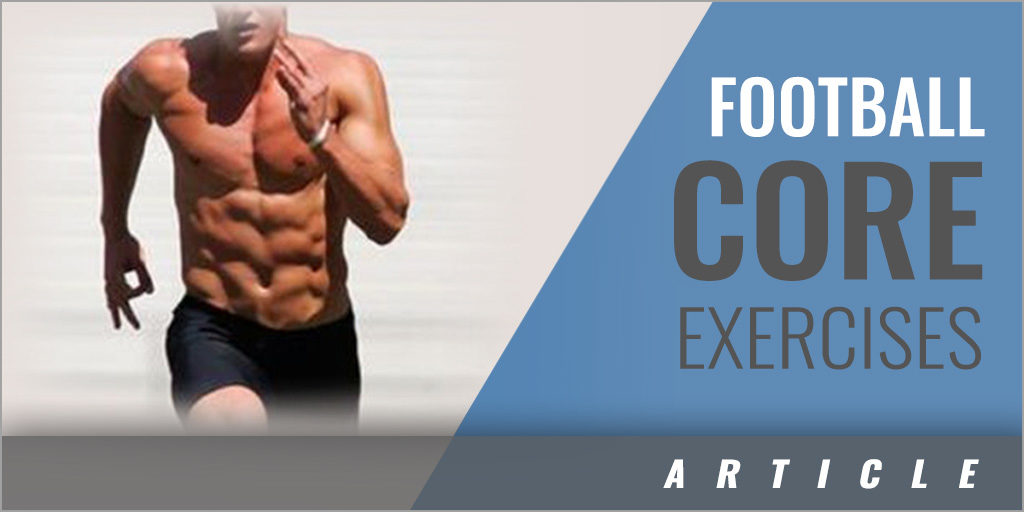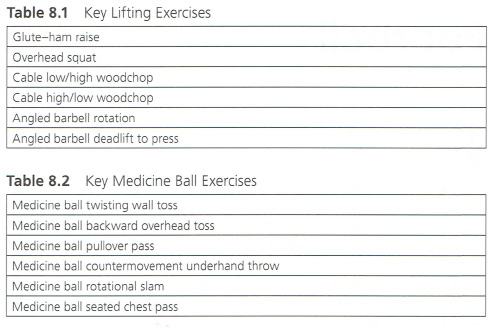|
By: Patrick McHenry Originally Published in: Developing the Core Provided by: Human Kinetics Football is a ground-based sport that requires explosive power and the ability to initiate high-velocity muscle actions in the upper and lower extremities. The core is the crucial kinetic link between the legs and hips, where power is developed, and the arms and shoulders, where the power is applied in skills such as blocking an opponent or reaching to catch a pass. Weakness in the core musculature interferes with the transfer of power. Conditioning of the core musculature is therefore essential to help football players perform better and to reduce the risk of injury. Developing the core musculature allows a player to maintain proper posture during the execution of football-specific skills. Preparing the core musculature for football requires more than performing sit-ups and crunches, which train primarily the rectus abdominis in the sagittal plane. Other movements must also be performed that incorporate the core muscles in other planes of motion and while stationary in a football posture. Football-specific goals for the core involve the maintenance of trunk stiffness with integrated actions of the upper and lower extremities. Athletes must be taught how to sufficiently stabilize the spine while moving in football-specific drills. This is why the use of a weight belt during resistance training can be detrimental. When a football player uses a weight belt during resistance training, he does not learn how to stabilize the spine during movement. For each of the exercises listed in this chapter, the coach should be cuing the athletes to stabilize while they move. To develop the core muscles for football performance, a wide variety of exercises can be used involving free weights, medicine balls, and sandbags. These exercises can be used throughout the entire year, while varying the sets and reps to match the objectives of the seasonal training program. Medicine ball and sandbag exercises can be incorporated during preseason and in-season cycles as conditioning drills on the field, eliminating extra time in the weight room before or after practice. When the athletes are in the weightroom, specific exercises that target the core muscles can be performed as a warm-up before other ground-based lifts with heavier loads. The exercises listed in tables 8.1 and 8.2 are used to prime the stabilizing functions of the core musculature.
PROGRAM DESIGN Table 8.3 presents guidelines to design a core muscle training program for football. The off-season is a great time to teach the novice football players the lifts and to reinforce technique with the advanced football players. Therefore, during the off-season, the weight should be lighter, with greater focus on lifting mechanics. During the preseason, players can utilize heavier weights and lifting velocities, with greater focus on maximizing strength and power. During the in-season, the volume of training is reduced, with the objective of maintaining core muscle fitness.
CORE EXERCISES UNIQUE TO FOOTBALL Other foundational lifts such as all variations of squats, deadlifts, and overhead presses all train the core musculature. The exercises outlined in the tables are intended as additional exercises for greater focus on the core muscles. Traditional exercises such as the barbell bench press can be modified for football specificity and greater core muscle involvement by performing a chest press action in a standing position with the use of cables or ground-based equipment designed for this purpose. Lastly, nontraditional implements such as water-filled weights and tires, similar to strongman-type training, can also be used to effectively train the core muscles as part of total-body integrated movement patterns. |








